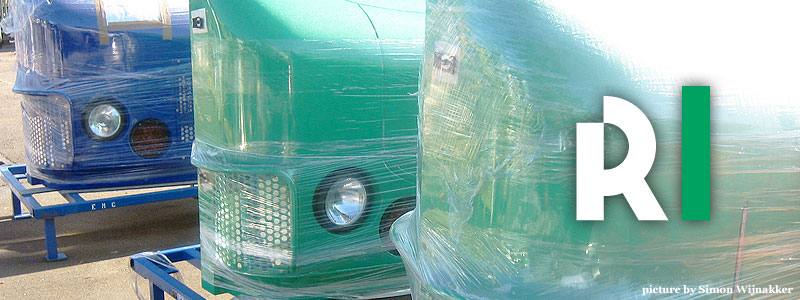|
Alstom Demonstrators
 Prima prototype
Prima prototype
in use from 2001 to 2004
visit profile
Initial Customers
 EL 4200 2U
EL 4200 2U
SNCF group > Fret SNCF / Akiem leasing
180 locomotives delivered as BB 27000 series
visit profile
 EL 4200 3U
EL 4200 3U
SNCF group > Akiem leasin
60 locomotives delivered as BB 37000 series
visit profile
 EL 4200 2P
EL 4200 2P
SNCF group > SNCF Transilien
67 locomotives delivered as BB 27300 series
visit profile
 EL 4200 3U
EL 4200 3U
Veolia Transport Cargo
15 locomotives delivered as E 37500 series
visit profile
 EL 4200 3U
EL 4200 3U
CBRail leasing
16 locomotives delivered as E 37500 series
visit profile
2nd hand purchased
 EL 4200 3U
EL 4200 3U
Europorte (ex. Veolia Transport Cargo)
6 locomotives purchased in 2010 as E 37500 series
visit profile
 EL 4200 3U
EL 4200 3U
SNCF Group > Akiem leasing (ex. Veolia Transport Cargo)
9 locomotives purchased in 2010 as E 37500 series
visit profile
Since the mid-90s, Alstom has been building main line diesel-electrics for customers all over the world. Machines are running in Syria, Iran, Sri Lanka, Israel, Spain, the U.S. and in the U.K. These are now known as PRIMA locomotives.
In 1998 the French national railways, SNCF, placed an order for 120 (later on increased to 240) electric locomotives for both domestic and international freight services. It was decided to develop a new modular platform for the SNCF order that would comply with European standards on interoperability and increased flexibility. This should make the new generation of Alstom electrics also interesting for other operators than the SNCF, as they could be used to cross the French-German border for example.
The SNCF order extended the PRIMA locomotive range, as also electrics are now well-known under this designation. Their design clearly shows familiarity with the older diesel-electric machines. Their looks however got special attention, as Paris based design agency MBD Design was given the assignment to design a standard front nose section.
In 2002, Alstom built a PRIMA electric demonstrator, in order to find the most optimal, modular, solution for arranging technical equipment, work space etc. When you take a close look at it you can see it is different on every side. Cab one has two doors; cab 2 has none on side 2 for example. When the delivery of the first machines for the SNCF started, the demonstrator had fulfilled its purpose. The silver and blue painted machine was stripped down. Whatever could be used on other machines, like electrical equipment and pantographs, was re-used. What remained was an empty body without bogies and roof equipment. This body is now a static monument next to the entrance of the Alstom site in Belfort, France.
The SNCF order also included a tri-voltage electric that has been able to work into Germany. This new border crossing capability of the PRIMA concept finally made it possible to end the monopoly of the French railways in long-haul freight services in and into France. In 2006 Veolia Transport got the very first PRIMA electric, not built for the French railways.
In 2003 a new PRIMA demonstrator was built, the multi-system PRIMA 6000. The original purpose of this machine was to show the Belgian railways what Alstom was capable of with their PRIMA platform, as the Belgian NMBS were planning on a large order of new multi-system engines. The NMBS finally choose for Siemens and Bombardier products. After that, the Prima6000 became a test platform for European signalling system ERTMS and the new PrimaII. In 2009 the engine was withdrawn.
Compared with the Siemens EuroSprinter and the Bombardier TRAXX platforms, it can be concluded that Alstom has not been very successful in marketing its latest products. This has got much to do with the big financial problems Alstom suffered from between 1997 and 2004. Alstom had withdraw from many activities, sell production facilities, and was not able to place a bid for several important orders. This however now has changed. Since 2005 they have been working on a come-back, which was finally presented by the PRIMA II in May 2008. The introduction of this even more advanced platform however does not necessarily mean that Alstom is done with the first generation PRIMA electrics. If customers still want such a machine, this of course will always be possible. |

